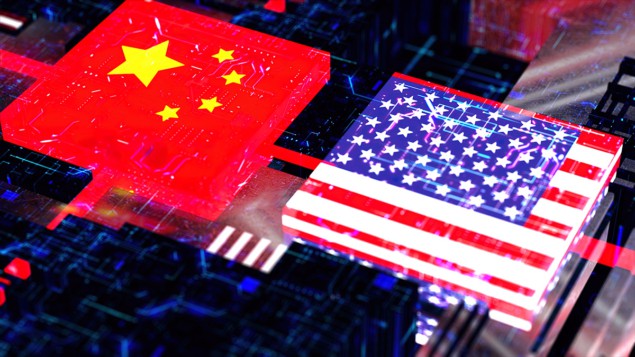Duncan Earl, chief technology officer at Qubitekk, says the US can only win the quantum race if it has a co-ordinated quantum programme under cohesive leadership

Quantum mechanics has the potential to change the world beyond our wildest imagination. While there are many challenges that must first be overcome, quantum technology promises to revolutionize many areas of life from computing and finance to cryptography and drug discovery. Such endless possibilities have led many countries to create their own national quantum programmes to advance progress, which are supported by billions of dollars, pounds, euros or yuan.
The nation leading the race so far to harness the power of quantum technologies is China. The country has constructed a 2000 km quantum-secured fibre-optic network and in 2017 demonstrated quantum-secured satellite communications. In 2019 and 2020 China’s demonstration of “quantum advantage” – a critical threshold on the path to powerful quantum computers – further revealed a sophistication and acceleration of its quantum-information programme.
In both political and scientific circles, some are quick to dismiss China’s recent progress, viewing Chinese publications with scepticism and asserting that the country is a “paper tiger”. Yet a closer examination of published Chinese quantum research reveals a level of detail, results and collaboration with western researchers that suggest the tiger has teeth. The Chinese are indeed prioritizing and dominating the quantum space, with every intention of winning this technology race.
China’s rapid progress is even more worrisome for the US when one considers that America was well ahead of China in quantum technology at the turn of the century. This reversal has been attributed to reduced US federal funding for quantum research between 2005 and 2015.
However, this explanation oversimplifies the US’s failures and also does not give China credit for its own advances. Inevitably, the situation is lamented in the US, with concerns ranging from China developing a quantum computer capable of cracking our most secure codes, to advanced Chinese military and industrial capabilities that vastly outpace our own.
Given China’s steady commitment and progress, the conversation in the US must now turn to asking serious questions about our level of commitment and about the need to create a timeline for accelerating the US quantum programme. Such discussions must focus on near-term defence, industry participation and policy actions that directly address the question: how can the US catch – and overtake – China in the quantum race?
A “quantum tsar”
In 2019 the US authorized $1.3bn of federal funding over five years for quantum research and development. The majority of the money goes to the national laboratories and academic universities for research, developing new quantum curricula, building quantum testbeds and growing the quantum workforce. These national laboratories and universities, in turn, are expected to engage industry partners to foster a US quantum industry with access to private investment leading to commercialization.
Unfortunately, this strategy is based on three flawed assumptions – all related to timing. First, we have a “let 100 flowers bloom” strategy that assumes the US has ample time to explore, mature and then trim unfruitful paths from a diverse cornucopia of quantum solutions.
Second, it assumes that the nation’s national laboratories and independent academic organizations will advance quantum technology at a pace that matches, or even exceeds, Chinese competitors. And third, it assumes billions of dollars in private investment to transition research into mature, market-driven solutions.
The Chinese quantum programme, in contrast, is led by quantum physicist Jian-Wei Pan and is managed by a tightly co-ordinated group of academic, government and industry partners. The programme is well resourced, with an annual budget estimated to be in the billions of dollars, and has the full support of the Chinese Communist Party. The US’s quantum race with China could be compared in some ways to the race to develop nuclear technology in the 1940s.
There are few past peace-time efforts that match the scientific magnitude and urgency associated with ushering in the quantum era
To catch the Germans, the US created the Manhattan Project where government, academic and industry partners worked largely under the leadership of Robert Oppenheimer. He successfully guided the basic nuclear R&D and engineering advances required to outpace the Germans.
Oppenheimer understood the urgency of the situation, along with the intricacies of the technology and the challenges of effectively co-ordinating specialized engineering and scientific workforces. He was the conductor of a large scientific orchestra, with the country’s best scientists and engineers serving as the players.
Where is our Oppenheimer for today’s competition to develop quantum technology? When does the quantum project begin? US institutions and researchers are among the best in the world but without a co-ordinated programme under cohesive leadership, we will remain in China’s shadow.
If the US is going to be successful in surpassing China, it must implement a streamlined, convergent strategy co-ordinated around a technically knowledgeable and programmatically skilled “quantum tsar”. This person must have the discretion to direct and distribute significant, sustained R&D funding to public and private organizations across the country.
They must oversee the selection of the various technical approaches and solutions in a careful, but swift, manner. The tsar must formulate and execute a strategy that prioritizes the rapid deployment of near-term quantum solutions and makes full use of the nation’s unique, technologically advanced industry partners. US-China quantum rivalry creates harmful barriers to progress
This is no small feat and there are few past peace-time efforts that match the scientific magnitude and urgency associated with ushering in the quantum era. But if the US is to mount a serious challenge to the rapidly accelerating Chinese quantum effort, it must implement a new strategy that acknowledges the country’s closing window of opportunity and the need for a more technically and organizationally focused strategy.
The US must urgently advance its national conversation from a techno-centric discussion to one focused on the timing and organizational challenges of accelerating progress for the nation’s quantum programme.



